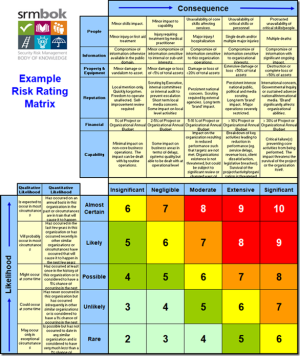Investigations and the Causality Sausage
 The topic of bias and worldview is rarely discussed as a foundation for incident investigations indeed, if you read the AIHS BoK Chapter of Ethics (https://safetyrisk.net/what-brand-of-ethics-is-safety/ ) or chapter on Causality (https://safetyrisk.net/there-is-no-root-cause/ ) you will be led to believe that Safety is neutral, objective and infallible. Such a misleading worldview is simply dangerous and drives nonsense investigations searching for cause when there often is none. When you make a ‘causality sausage’ you get a nice elongated looking object with no substance.
The topic of bias and worldview is rarely discussed as a foundation for incident investigations indeed, if you read the AIHS BoK Chapter of Ethics (https://safetyrisk.net/what-brand-of-ethics-is-safety/ ) or chapter on Causality (https://safetyrisk.net/there-is-no-root-cause/ ) you will be led to believe that Safety is neutral, objective and infallible. Such a misleading worldview is simply dangerous and drives nonsense investigations searching for cause when there often is none. When you make a ‘causality sausage’ you get a nice elongated looking object with no substance.
When a lawyer enters the scene we get a very different worldview and lawyers understand that investigations can lead to ‘no finding’ and ‘no cause’ (https://vimeo.com/167228715 ). Root cause and root cause analysis are a great example of fundamental attribution error (https://opentextbc.ca/socialpsychology/chapter/biases-in-attribution/ ).
Just have a look on the market at supposed investigations and look for a perspective on: human bias, attribution, methodology, learning theory bias, psychology of perception, transdisciplinarity, worldviews, unconscious decision making, heuristics and false consciousness. You won’t find any. Have a look at supposed investigations for learning and look for a statement on learning, it’s not there.
Most of the investigation stuff on the market simply perpetuates simplistic behaviourist nonsense. When you put the safety mince in you get out a causality sausage.
When your anchor to investigation is Heinrich (https://safetyrisk.net/ration-delusions-and-heinrichs-hoax/ ), Reason or Peterson then your rationalist, linear and hierarchical assumptions will lead you away from any idea of an open investigation. The Dreamworld investigation (https://safetyrisk.net/an-engineering-dreamworld/ ) is a classic example of engineering bias common in most investigations. An Engineering worldview looks for engineering factors. A Human Factor worldview looks for systems (not human) factors. Neither have an open nor transdisciplinary approach to investigation.
So, if you are interested in investigations as learning then the place to start is with a critique of methodology, method and bias. Unless the investigator is prepared to apply critical thinking to their methodology, the investigation will just be a ‘causality sausage’. In the SEEK investigations module, this is where we start (https://cllr.com.au/product/seek-the-social-psyvhology-of-event-investigations-unit-2/) with critique of methodologies (worldviews).
So, look up the investigations model you are using and see if it starts with: worldviews, learning methodology or perception. If it doesn’t then you are probably just reproducing a causality sausage.
21. ROOT CAUSE from Human Dymensions on Vimeo.



Brent R Charlton says
I have fought against the “every incident must have a corrective action” point of view for longer than I can remember. Typically results in something like “advise employee to be more situationally aware.” Then in the next report we get “employee lost focus.” I still don’t know how to be 100% focused and 100% situationally aware at the same time, but I guess I’m some sort of oddball. If they know I don’t like those answers, I get another written procedure, a sign, or a longer checklist to pencil whip.
Rob Long says
Brent, the real problem is the much deeper issue of binary thinking. Safety is never happy with the dialectic, it must always be black or white. It has no answer for fallibility except denial in zero. The idea that every incident is preventable or safety is a choice you make is such binary language and the language of the zero cult. Whatever the mumbo jumbo, Safety simply cannot deal with the idea that accidents will happen and people will get harmed. Meanwhile, the whole insurance industry is premised on the opposite belief of Safety.